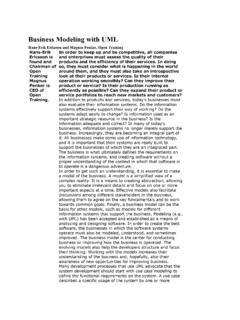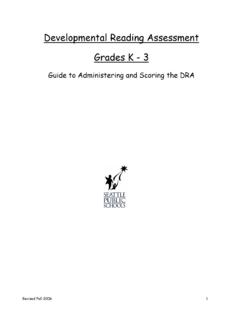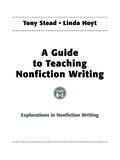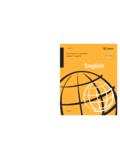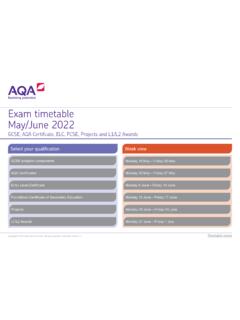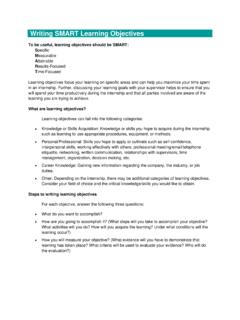Transcription of TOEFL MODULE 1: READING
1 1 UNIVERSIDAD TECNOL GICA DE LA MIXTECA CENTRO DE IDIOMAS, DIVISION DE ESTUDIOS DE POSGRADO POSTGRADUATE PROGRAM: TOEFL EXAM PREPARATION TOEFL MODULE 1: READING 2 Postgraduate Program: TOEFL Exam Preparation TOEFL MODULE 1: READING PREREQUISITES All students taking this course must have completed and passed FCE2, or have scored more than 70 points in the Idiomas Placement test. INFORMATION ABOUT THE TEACHER My name is Maria Pinto. I am in Office 12 in the two-storey Centro de Idiomas building. Email: Web page: ~ COURSE INFORMATION The TOEFL course consists of two semester-long modules, plus one summer intensive preparation course. MODULE 1 of the TOEFL course is a TOEFL READING program. It incorporates activities from the paper-based and the Internet-based (iBT) versions of the TOEFL exam. MODULE 2 of the TOEFL course is a TOEFL listening program which also incorporates activities from the paper-based and the iBT versions of the TOEFL exam. Delivery of this MODULE is subject to the availability of teaching resources.
2 (In other words: This course will be given when we have the books, CDs, computer setup, and CD-ROMs we need to be able to give the course.) The Summer Intensive MODULE will incorporate activities from the Structure and Written Expression and the Test of Written English sections of the paper-based TOEFL exam, and Speaking and Writing practice activities from the Internet-based TOEFL exam. Delivery of this MODULE is subject to the availability of teaching staff and teaching resources. MODULE 1: READING This is a one semester long course. To pass the course, students must: Complete the activities for each week of the course. Take (and pass) the midterm and the Final exam for the course There are no face-to-face classes for this course. Students are expected to download the packet of readings from Maria s website, and work through them. Please visit Maria in her office, or send her an email if you have any questions or need help with the readings. Please make sure Maria has an up-to-date, working email address for you, so that she can contact you when necessary!
3 EXAM INFORMATION You will do a midterm and a final exam for the TOEFL READING MODULE . Each exam takes two hours. You must do the exam on the dates given below. Students who do not do one or both exams on the due dates will score a 0 on the MODULE and will fail the course. Date Location Midterm Exam 1 or 2 December 2016 Sala de Auto-acceso, Centro de Idiomas (Ask Ang lica for the exam.) Final Exam 1 or 2 February 2017 Sala de Auto-acceso, Centro de Idiomas (Ask Ang lica for the exam.) 3 The TOEFL exams There are two different TOEFL exams; the Internet-based TOEFL (iBT), which is taken by 96% of students around the world, and the paper-based TOEFL , generally given in are significant differences between the two exams, summarized in the table below. Paper-based TOEFL Internet-based TOEFL What does it test? Tests discrete skills. Direct skill testing. Sections listening Structure and Written Expression (SWE) READING Test of Written English (TWE) ( optional ) READING listening Speaking Writing Points 677 points (Students usually require 550 points to enter Master or doctoral level programs.)
4 120 points Advantages of the test for UTM students Cheaper (usually costs ~700 pesos). More places in Oaxaca offer this test. Scores accepted by Mexican universities and by many American universities. Quicker to prepare for (the exam format has many similarities with the Cambridge exams) Easier to study for, as students can specifically study grammar Mexican students generally have problems writing well in English. The written section of this test is optional , and only offered a couple of times a year. 96% of the world does this test. Doing well on the test means that you speak, read, write, and hear English well enough to do well in studies abroad. Disadvantages of the test for UTM students Only 4% of the world does this test, so it is difficult to get access to books and practice materials for the test. No specific grammar section, so students must have good general fluency Integrated tasks require a high level of fluency. Cost: The test costs almost 3000 pesos.
5 DIFFERENCES BETWEEN THE PAPER-BASED AND IBT TOEFL READING EXAMS Paper-based Internet-Based 55 minutes ~5 passages, 50 questions 60-100 minutes 3-5 passages, 12-14 questions on each passage Passages are shorter Passages are much longer than with the paper-based test. 4 Semester overview Week Dates Material covered Completed? 1 3-7 October 2016 TOEFL Paper-based test: 6 October 2 10-14 October 2016 Main idea questions 3 17-21 October 2016 Main idea and organization 4 24-28 October 2016 Directly answered questions 5 31 Oct 4 Nov 2016 Directly and indirectly answered questions 6 7-11 November 2016 Indirectly answered questions 7 14-18 November 2016 Indirectly answered questions 8 22-25 November 2016 Review 9 28 Nov 2 Dec 2016 MIDTERM EXAM: 1 or 2 December 10 5-9 December 2016 Vocabulary 11 12-16 December 2016 Vocabulary 12 2-6 January 2017 Vocabulary and inferences 13 9-13 January 2017 Vocabulary review 14 16-20 January 2017 Overall exam review 15 23-27 January 2017 READING to learn 16 31 Jan 3 Feb 2017 FINAL EXAM: 1 or 2 February 5 Table of contents Prerequisites.
6 2 Information about the teacher .. 2 Course information .. 2 MODULE 1: READING .. 2 Exam information .. 2 The TOEFL exams .. 3 Differences between the paper-based and iBT TOEFL READING exams .. 3 Semester overview .. 4 Table of contents .. 5 Week 2: Main idea questions .. 7 (PBT) Answer main idea questions correctly .. 7 (iBT) Select summary 10 Week 3: Main idea and organization .. 12 (PBT) Recognize the organization of ideas .. 12 (iBT) Insert sentences into the passage .. 14 Week 4: Directly answered questions .. 16 (PBT) Answer stated detail questions 16 (iBT) Find factual information .. 18 Week 5: Direct and indirectly answered questions .. 20 (PBT) Find pronoun referents .. 20 (iBT) Recognize referents .. 22 Week 6: Indirectly answered questions .. 24 (PBT) Find unstated details .. 24 (iBT) Understand negative facts .. 26 Week 7: Indirectly answered questions .. 28 (PBT) Answer implied detail questions correctly .. 28 (iBT) Make inferences from stated facts.
7 31 Week 8: Review .. 33 (PBT) Answer transition questions correctly .. 33 (iBT) Review exercises .. 35 Week 9: MIDTERM (1-2 December 2016).. 37 Week 10: Vocabulary .. 38 (PBT) Find definitions from structural clues .. 38 (iBT) Understand vocabulary from context .. 40 Week 11: Vocabulary .. 42 (PBT) Determine meanings from word parts .. 42 (PBT) Use context to determine meanings of difficult words .. 44 6 Week 12: Vocabulary and inferences .. 46 (PBT) Use context to determine meanings of simple words .. 46 (iBT) Infer rhetorical purpose .. 48 Week 13: Vocabulary review .. 50 (iBT) Review exercises .. 50 Week 14: Overall exam review .. 55 (PBT) Determine where specific information is found .. 55 (PBT) Determine the tone, purpose, or course .. 57 Week 15: READING to learn .. 60 (iBT) Complete schematic tables .. 60 (iBT) Review iBT exam .. 62 Week 16: FINAL EXAM (1-2 February 2017) .. 64 Answer key .. 65 7 Week 2: Main idea questions (PBT) ANSWER MAIN IDEA QUESTIONS CORRECTLY MAIN IDEA QUESTIONS How to identify the question What is the topic of the passage?
8 What is the subject of the passage? What is the main idea of the passage? What is the author s main point in the passage? With what is the author primarily concerned? Which of the following would be the best title? Where to find the answer The answer to this type of question can generally be determined by looking at the first sentence of each paragraph. How to answer the question 1. Read the first line of each paragraph. 2. Look for a common theme or idea in the first lines. 3. Pass your eyes quickly over the rest of the passage to check that you really have found the topic sentence(s). 4. Eliminate any definitely wrong answers and choose the best answer from the remaining choices. PASSAGE ONE (QUESTIONS 1-2) Line (5) Fort Knox, Kentucky, is the site of a army post, but it is even more renowned for the Fort Knox Bullion Depository, the massive vault that contains the bulk of the government's gold deposits. Completed in 1936, the vault is housed in a two-story building constructed of granite, steel, and concrete; the vault itself is made of steel and concrete and has a door that weighs more than twenty tons.
9 Naturally, the most up-to-date security devices available are in place at Fort Knox, and the army post nearby provides further protection. 1. Which of the following best describes the topic of the passage? (A) The city of Fort Knox, Kentucky (B) The federal gold depository (C) The army post at Fort Knox (D) Gold bullion 2. Which of the following would be the best title for this passage? (A) The Massive Concrete Vault (B) Fort Knox Security (C) Where the Keeps Its Gold (D) A Visit to Kentucky 8 PASSAGE TWO (QUESTIONS 3-4) Line (5) One identifying characteristic of minerals is their relative hardness, which can be determined by scratching one mineral with another. In this type of test, a harder mineral can scratch a softer one, but a softer mineral is unable to scratch the harder one. The Mohs' hardness scale is used to rank minerals according to hardness. Ten minerals are listed in this scale, ranging from talc with a hardness of 1 to diamond with a hardness of 10.
10 On this scale, quartz (number 7) is harder than feldspar (number 6) and is therefore able to scratch it; however, feldspar is unable to make a mark on quartz. 3. Which of the following best states the subject of this passage? (A) The hardness of diamonds (B) Identifying minerals by means of a scratch test (C) Feldspar on the Mohs' scale (D) Recognizing minerals in their natural state 4. The main idea of this passage is that (A) the hardness of a mineral can be determined by its ability to make a mark on other minerals (B) diamonds, with a hardness of 10 on the Mohs' scale, can scratch all other minerals (C) a softer mineral cannot be scratched by a harder mineral (D) talc is the first mineral listed on the Mohs' scale PASSAGE THREE (QUESTIONS 5-6) Line (5) (10) Hurricanes generally occur in the North Atlantic from May through November, with the peak of the hurricane season in September; only rarely will they occur from December through April in that part of the ocean.



